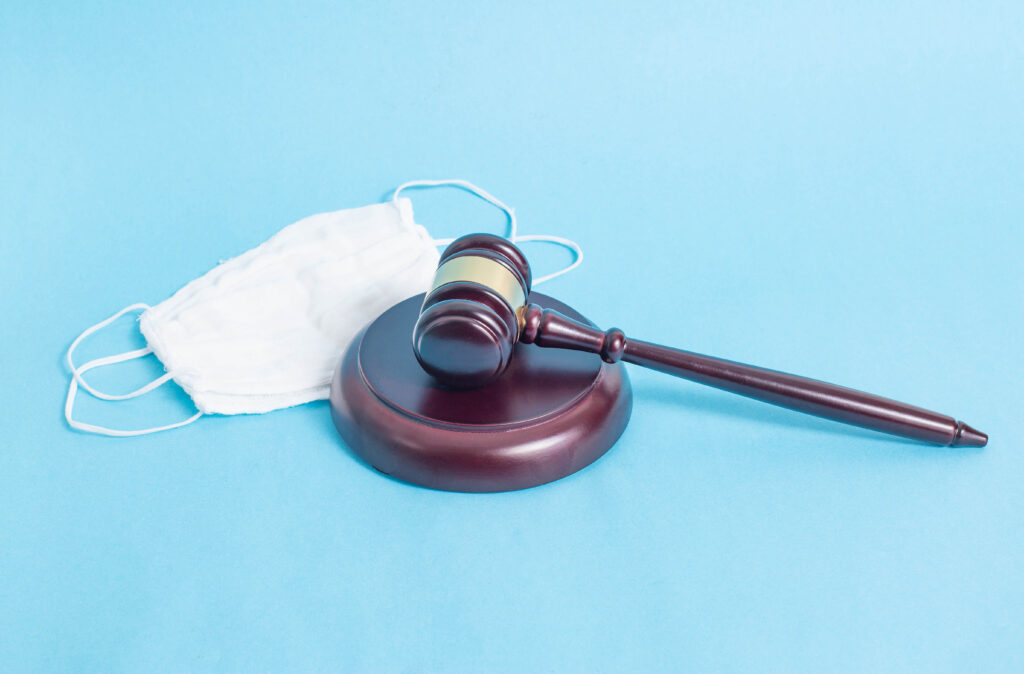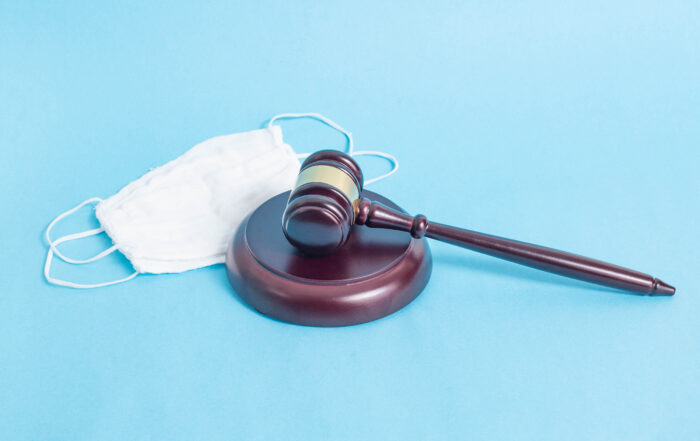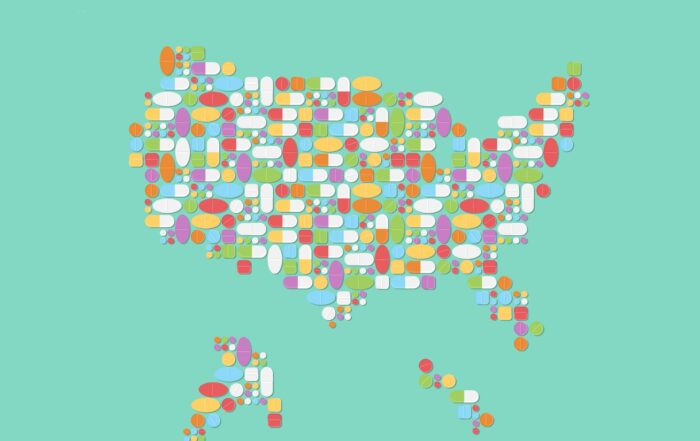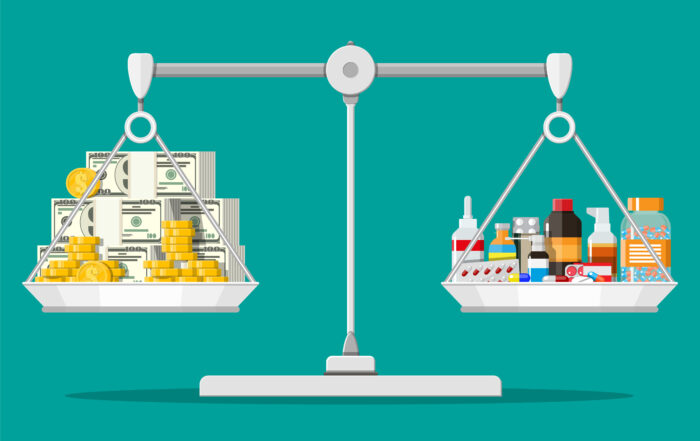
FDA Guidance in Response to COVID-19 and a Plan for Transition Back to Normal
By Tony Subketkaew, Suzie Trigg, Joanna Pearce & Neil Issar
From the outset of the COVID-19 public health emergency, the U.S. Food and Drug Administration (FDA) engaged in policymaking at a blistering speed compared to its historically measured pace. Robert Califf, who previously led the agency under Obama, was recently confirmed as FDA commissioner, and Califf’s approach to agency guidance will be closely monitored by many stakeholders. With two COVID-19 vaccines now approved, some of the impacts of the pandemic can be mitigated, but as we return to a more measured cadence, it is worthwhile to consider the lessons learned from this exercise in policymaking at an accelerated speed.
In the early days of the COVID-19 public health emergency, FDA issued a flurry of guidance documents. Many of the COVID-19-specific guidance documents were issued without prior public participation in the development process. We now have the benefit of hindsight to evaluate whether bypassing such participation was warranted and the impacts of foregoing the customary process and pace.
FDA’s guidance entitled “Enforcement Policy for Face Masks and Respirators During the Coronavirus Disease (COVID-19) Public Health Emergency” (the Enforcement Policy)[1] provides a helpful case study to:
- Review the statutory and regulatory foundations that enable FDA to issue guidance as a means of policymaking;
- Examine the need for policy due to the public health emergency;
- Analyze whether public participation would have improved the guidance under the circumstances; and
- Project some of the longer-term impacts and issues arising from the evolution of guidance policy.
I. FDA Turned to Guidance to Address the Time-Sensitive and Increased Demand for Masks and Other Mitigation Measures
COVID-19 presented unprecedented challenges for not only our society and economy, but also for FDA and its policymaking. FDA usually spends months preparing guidance documents prior to publication. But the sudden demand for hand sanitizer, test kits, and personal protective equipment (PPE) placed intense pressure on FDA to rapidly issue guidance documents that would allow the flexibility needed for regulated industry to respond to needs created by the pandemic and reduce barriers to the manufacture and distribution of critical products that were in short supply.
Normally, masks that are intended for protection from disease are considered medical devices and therefore must meet the applicable FDA regulatory requirements, such as those requiring registration and listing and the creation of an adequate quality system. Relatedly, even though some masks were not appropriate for protecting wearers from COVID-19 exposure, guidance from the Centers for Disease Control (CDC) identified mask wearing as a potentially useful tool for source control (preventing or reducing those infected with COVID-19 from spreading it to others). It is important to note that while both FDA and CDC play a role in guiding America’s pandemic response, the agencies have very different missions. FDA is primarily tasked with ensuring the safety and efficacy of products under its jurisdiction (such as foods, drugs, and medical devices), while CDC protects the nation from health, safety, and security threats. In other words, FDA is responsible for ensuring that medical devices (like masks intended for protection from disease) are safe and effective, while CDC provides guidance on appropriate uses of masks to help prevent the spread of disease.
Due to the public health emergency, masks that met all of FDA’s then-strict regulatory requirements were in short supply. These supply challenges also created other problems, such as inferior counterfeit masks infiltrating the market and being used by consumers and healthcare workers.[2] FDA was faced with the unenviable task of quickly and exponentially increasing the overall supply of masks—while still assuring quality and safety—with the limited regulatory tools at its disposal.
FDA’s guidance framework presented a workable solution. Even though FDA has been criticized in the past for policymaking via guidance instead of formal rulemaking, the pandemic allowed FDA to use its guidance authorities that specifically recognize emergency situations where speed and necessity take priority over the procedural formalities involved with traditional rulemaking. What better use of these authorities than a pandemic where the speed at which FDA issues guidance directly correlates to protecting the public health in real-time?
II. Statutory and Regulatory Authorities Enable FDA to Issue Guidance as a Means of Policymaking
FDA’s use of guidance stands apart from other agencies in that specific statutory authorities and regulations outline the contours of how and when the agency can issue guidance. The Food and Drug Administration Modernization Act of 1997 (FDAMA)[3] added language describing the role of guidance in FDA’s policy efforts in by creating subsection (h) in Section 701 of the Federal Food, Drug, and Cosmetic Act (FDCA).[4] Some of the most significant provisions include:
- Guidance must be developed with public participation and must not confer any rights for or on any person.[5]
- Guidance is not binding on the Secretary of the Department of Health of Human Services (the Secretary), but FDA employees must not deviate from guidance without appropriate justification and supervisory concurrence.[6]
- Guidance that “set[s] forth initial interpretations of a statute or regulation, changes in interpretation or policy that are more than a minor nature, complex scientific issues, or highly controversial issues” must involve public participation unless the Secretary determines that such participation “is not feasible or appropriate.”[7]
- The Secretary must evaluate this new guidance scheme and promulgate regulations consistent with the new subsection.[8]
This language is largely mirrored in the corresponding regulations issued pursuant to this subsection. The regulation issued under this authority in 21 C.F.R. § 10.115 clarifies the procedures for issuing guidance. This regulation bifurcates agency guidance documents into two categories: Level 1 and Level 2.
Level 1 guidance documents:
- Set forth initial interpretations of regulatory requirements;
- Set forth changes in interpretation or policy that is more than minor;
- Include complex scientific issues; or
- Cover highly controversial issues.[9]
Level 2 guidance is simply defined as guidance that is more minor in nature and “all guidance documents that are not classified as Level 1.”[10] The main distinction between Level 1 and Level 2 guidance is that Level 1 guidance typically requires public comment prior to implementation unless “the agency determines that prior public participation is not feasible or appropriate.”[11] If FDA makes the determination that such public participation is not feasible or appropriate, it may immediately implement the guidance and then invite comments.
How does FDA determine whether prior public participation on guidance documents is “feasible or appropriate”? The preambles for the proposed and final “Administrative Practices and Procedures; Good Guidance Practices” rule provide some insight.[12] The preamble for the proposed rule clarified that FDA did not interpret the legislative history surrounding FDAMA as only allowing for the waiver of prior public participation during public health emergencies.[13] FDA may waive public participation requirements in specific situations, including:
- Public health reasons requiring immediate implementation;
- When there is a statutory requirement, executive order, or court order that requires immediate implementation; or
- When the guidance potentially presents a less burdensome policy that is still consistent with public health.[14]
The final rule preamble ratifies these categories but adds that FDA should also explain the reason for waiving public participation in the Notice of Action accompanying the issuance of the guidance document.[15]
Taken together, these authorities support the notion that a public health emergency justifies the waiver of prior public participation. Correspondingly, the Secretary of the U.S. Department of Health and Human Services declared a public health emergency on January 31, 2020,[16] laying the groundwork for bypassing public participation as not “feasible or appropriate.” FDA then used guidance documents to add flexibility to other regulatory schemes impacted by the pandemic. Some of the issues addressed by guidance documents include:
- Providing flexibility to comply with existing food regulations by providing alternatives to on-site audits (such as sampling, testing, or reviewing relevant food safety records) when travel restrictions prevented those regulatorily-mandated activities.[17]
- Increasing flexibility of food labeling requirements to address minor formulation changes necessitated by temporary supply chain disruptions.[18]
- Increasing availability of COVID testing kits by describing conditions that must be met by labs and manufacturers producing tests.[19]
- Allowing restaurants to sell packaged food directly to consumers without the required nutrition information on labeling.[20]
- Describing the manufacturing and labeling requirements for hand sanitizer for companies that normally do not produce such products, such as distillers and cosmetics manufacturers.[21]
As the COVID-19 public health emergency progressed, FDA continued to address unique issues raised by the pandemic through guidance, such as its guidance on returning refrigerated trucks to food use after operating as temporary morgues.[22]
While some of these guidance documents did not require further revisions, that was not the case for the Enforcement Policy referenced earlier in this article.
III. For Better or Worse, FDA’s Enforcement Policy Allowed the Sale of Face Masks and Respirators That Did Not Meet Normal Regulatory Requirements
FDA issued the first version of the Enforcement Policy on March 25, 2020, “to help expand the availability of general use face masks for the general public and particulate filtering facepiece respirators (including N95 respirators) for health care professionals during this pandemic.”[23] Predictably, FDA identified the public health emergency to justify the implementation of the policy without prior public comment.
The Enforcement Policy comprehensively outlined FDA’s policy towards mask-type products by:
- Defining the different types of face mask products;
- Explaining when face masks, face shields, and N95 respirators are not medical devices and thus not subject to FDA regulation;
- Describing the conditions that must be met for marketing medical face masks and surgical masks for FDA to not “object to the distribution and use of” such devices when they do not fully comply with applicable FDA regulations; and
- Outlining the factors FDA considers in reviewing Emergency Use Authorizations (EUAs) for masks and respirators.
Importantly, by describing situations in which masks are not medical devices, FDA provided a way for manufacturers to sell mask products to the general public without having to adhere to FDA requirements. For other mask products that may meet some but not all performance standards for medical masks, FDA outlined conditions under which it would not object to the sale of those products. This guidance had the net effect of increasing the overall supply of masks on the market, but as the saying goes: “more masks, more problems.”
FDA first revised the Enforcement Policy in an April 2020 update that expanded the types of facial protection products that marketers could sell without FDA objection. Of note, the revised Enforcement Policy allowed the sale of face shield products that did not meet all regulatory requirements, as well as masks identified in CDC’s “Strategies for Optimizing the Supply of N95 Respirators: Crisis/Alternate Strategies” (the Recommendations). The Recommendations allowed for the use of other masks approved under standards in other countries that were similar to respirators approved by the National Institute for Occupational Safety and Health (NIOSH). This opened the door for importers and foreign suppliers to bring a variety of products into the U.S. market. Most significantly, CDC identified Chinese KN95 masks as roughly equivalent to N95 masks. Foreshadowing a headache that would accompany the revised Enforcement Policy, FDA commented that because it “cannot confirm the authenticity of the [masks] described above,” it “recommends that importers take appropriate steps to verify the authenticity of the products they import.”[24]
While traditional medical device importers may have known how to take the “appropriate steps to verify the authenticity” of masks, newer importers encountered a maelstrom of largely useless documentation. To “prove” the authenticity of the products, foreign suppliers would provide detailed manufacturing specifications, supposed FDA certificates (themselves not authentic), third party certificates of analysis, pictures of the products, and other related information. Verifying authenticity was an exercise that was uncertain at best, even when many appropriate steps were taken to attempt to verify authenticity.
IV. FDA’s Allowance for the Use of Products Approved Under Foreign Regulatory Standards Resulted in More Fraudulent Products Being Offered for Sale and Led to Subsequent Revisions to the Enforcement Policy
With a hot new market for mask products and the pandemic continuing to rage across the world, sellers were ready to take advantage of consumers looking for protection. The flood of products and wide variety of standards and claims likely contributed to the confusion about what was protective (and how protective) and what was being sold with FDA’s blessing (or lack of objection). What did it mean when a mask’s label included the terms N95, NIOSH, KN95, FFP, ASTM, PPE, or EUA? Which ones were the best or most protective? Because many consumers did not understand the meaning of these terms, it is easy to see how some may have been misled into believing that the mask products they were purchasing were somehow “approved” or at least reviewed by FDA or a foreign regulatory agency, when in reality, the products had not been reviewed by any U.S. authority and may not have even met the standards they referenced. It was at this point that many KN95 products entered the U.S. market.
In response to fraud issues, FDA initiated Operation Quack Hack to cut down on internet scammers selling products with unproven claims, working with online marketplaces and payment processors to remove violative products.[25] In addition to the Enforcement Policy, FDA also issued several “umbrella” EUAs that allowed manufacturers to receive an explicit authorization from the agency for specific products. From a marketing perspective, EUAs were much more desirable (and, correspondingly, more difficult to obtain) than simply selling under the Enforcement Policy as the former pathway included an official mention on FDA’s website indicating the agency’s authorization while the latter simply indicated that the manufacturer is meeting conditions for FDA to “look the other way” on enforcement.
As to FDA’s prescient concern about the authenticity of masks produced under foreign standards, the May 2020 update to the Enforcement Policy commented that “FDA ha[d] become aware of concerns regarding the performance of certain respirators based on testing conducted by CDC” and those concerns warranted “greater oversight.”[26] This led FDA to discontinue the policy added in the April update that allowed for the use of respirators approved under foreign regulatory standards. The update effectively limited the sale of respirator products to only those that were 1) FDA-cleared, 2) NIOSH-approved, or 3) authorized under an EUA. FDA created an umbrella EUA for KN95 respirators that limited authorized KN95 respirators to those included in the EUA. FDA issued the most recent (and likely final) version of the Enforcement Policy in September of 2021.[27]
This version added barrier face coverings within the scope of the Enforcement Policy and also provided recommendations about corresponding technical features for barrier face coverings. FDA describes barrier face coverings to be products that are “worn on the face, specifically covering at least the wearer’s nose and mouth, with the primary purpose of providing source control and to provide a degree of particulate filtration to reduce the amount of inhaled particulate matter.” The Enforcement Policy also added ASTM F3502 to the pandemic lexicon (make room, ASTM 2100!), a standard which identifies specific technical requirements for submicron particulate filtration efficiency and airflow resistance and makes recommendations for product labeling and leakage assessments. FDA explains that these devices can be used for source control and can also provide a degree of particulate filtration, and thus might be of some benefit to healthcare providers and the general public.
Of note, the revised Enforcement Policy also removes references to alternative types of masks when FDA-cleared or NIOSH-approved N95 respirators are unavailable. Lastly, the revised Enforcement Policy clarifies that FDA will not object to stockpiled non-NIOSH approved disposable respirators that are used for source control.
V. Could These Problems Have Been Avoided with Pre-Issuance Public Participation?
The short-yet-very-unsatisfying response is “perhaps some could have been avoided.” Delaying critical guidance would only have lengthened the already-too-long wait for easily accessible and affordable protection for healthcare providers and consumers. And therefore, in hindsight, delaying guidance for pre-issuance public participation—as well as the agency’s consideration of such input—would likely have been more unacceptable than the limitations of the initial guidance issued in the early days of the COVID-19 public health emergency.
FDA recognizes the value of public participation in its policymaking efforts and acknowledges that public comments often help shape the contours of final rules.[28] On one hand, the intense demand and short supply generated interest among fraudulent sellers. Public participation could have assisted FDA with crafting the initial guidance to explicitly describe labeling and when claims referencing standards such as N95 and KN95 are allowed, as well as what documentation or substantiation is needed to support the labeling claims. For example, FDA’s guidance for hand sanitizer products provided a specific example of the label that must be used to comply with the guidance.
Concrete guidance about what could or could not go on a mask label may not only have deterred fraudulent sellers without the proper documentation, but also would have provided new distributors desiring to comply with FDA guidance valuable information about how to lawfully market their products. Many distributors entered the PPE and FDA-regulated products marketplace for the first time because of the pandemic and were largely unfamiliar with FDA requirements.
In addition, clearly delineating and explaining the marketing pathways for mask products (normal 510(k),[29] EUA, or Enforcement Policy) up front could have prevented much confusion about a product’s status with FDA.
On the other hand, some of the problems would have emerged regardless of public participation. FDA likely could not have foreseen the extended duration of the pandemic, conflicting or confusing guidance being issued from CDC, or flood of COVID-related information diluting its efforts to educate the public about relevant issues.
The Enforcement Policy rapidly increased the overall supply of masks in the United States, which in itself was a policy victory. Additionally, the evolution of the Enforcement Policy and accompanying EUA schemes for masks and respirators should also be considered a victory as they reflect FDA’s ability to adjust and adapt when new information requires a change in previous policies.
VI. Moving Forward and the Elusive Path Back to Normal
The impacts of the COVID-19 public health emergency are ongoing, but less emergent over time as policymakers and regulators have time to implement more thorough and measured responses to the pandemic. On some level, mask sellers likely should have known that FDA would eventually transition back to the normal regulatory scheme by gradually winding down some of its pandemic-era marketing authorities. FDA’s statutory authorities even contemplate this scenario: under section 564(b)(3) of the FDCA, the Secretary of HHS must provide sufficient advance notice of termination of an EUA to allow for the disposition of an unapproved product.[30]
Subsequent FDA actions indicate that the agency has started considering how to wind down the Enforcement Policy and other related guidance documents. On June 30, 2021, in response to the increased supply and availability of NIOSH-approved respirators, FDA revoked the EUAs for non-NIOSH-approved disposable respirators (revocation effective July 6, 2021) and for decontamination and bioburden reduction systems (revocation effective June 30, 2021).[31] As of the respective effective dates, these devices are “no longer authorized for use by health personnel in health care settings.”[32]
Hand sanitizers from non-traditional manufacturers, another symbol of the pandemic era, are being phased out after FDA announced its intention to withdraw the temporary guidance policies allowing for the manufacture and sale of hand sanitizers.[33] Entities manufacturing under the temporary policies were to cease production on or before December 31, 2021, and manufacturers may no longer sell hand sanitizers created under these policies after March 31, 2022.[34]
However, the Enforcement Policy and EUAs effectively created an entirely new regulatory scheme and market for mask products, and that market is not likely to conveniently fade away as the pandemic wanes. The Administration faces the challenge of striking a balance between not penalizing companies that helped to meet an urgent public health need and curtailing the ability of other companies that simply looked to profit by stockpiling and selling masks.
As we anticipate further terminations or revocations of EUAs and the subsequent impact and transition that affected companies will undergo, we can look to historical information about terminated or revoked EUAs.[35] For example, the Umbrella EUA for Surgical Masks was issued on August 5, 2020, and certain surgical mask models that had previously been listed as authorized but did not meet the EUA’s scope of authorization were removed from the list.[36]
With the June 30, 2021, update revoking the EUAs for non-NIOSH-approved disposable respirators, FDA issued recommendations for transitioning the market for mask products, including the following:
- Health care personnel and facilities should “consider redistributing current inventory of non-NIOSH-approved respirators” to “non-health care settings for non-medical use.”
- While a product intended for use as a respirator could be used as a face mask even if it is not FDA-cleared, NIOSH-approved, or authorized by FDA for emergency use, “the FDA does not recommend that non-NIOSH-approved respirators” be reconditioned or repurposed “at this time because there is currently sufficient supply of source control medical devices.”
- Health care personnel should “continue to increase inventory of available NIOSH-approved respirators.” [37]
Overall, these recommendations seem to indicate FDA’s initial steps to end the EUA period and handle the increased supply of masks on the market.
VII. The Path Forward
Finally, FDA took steps towards addressing EUA and Enforcement Policy issues in a post-pandemic world by issuing two draft guidance documents—one addressing medical devices falling within enforcement policies[38] and one addressing medical devices marketed with EUAs[39]—on December 22, 2021 (the Transition Guidances). Both documents outline a set of “Guiding Principles” that FDA followed in developing the guidance documents, noting considerations such as FDA’s risk-based approach and intention to continue providing patients, consumers, and healthcare providers with access to necessary devices. Notably, the Transition Guidances afford the public the opportunity to participate in the development of FDA policy by submitting comments.
The Transition Guidance for enforcement policies (the Enforcement Policy Transition Guidance) proposes a 180-day transition period that begins on an implementation date and ends with the withdrawal of the guidance documents (including the Enforcement Policy). The Enforcement Policy Transition Guidance defines the implementation date as the date on which the public health emergency declaration expires. In true pandemic fashion, the transition period is also divided into phases, each with progressively more regulatory requirements expected from manufacturers marketing medical devices under the Enforcement Policy.
Phase 1, which starts on the implementation date, requires manufacturers to follow the adverse event reporting requirements under 21 C.F.R. Part 803. Phase 2 begins ninety days after the implementation date and adds the reports of corrections and removals requirements under 21 C.F.R. Part 806 and, if manufacturers intend to pursue traditional marketing authorization pathways, registration and listing requirements under 21 C.F.R. Part 807 Subparts B-D. Lastly, Phase 3 begins 180 days after the implementation date and withdraws all applicable guidance documents identified in the Enforcement Policy Transition Guidance (including the Enforcement Policy) and requires manufacturers to follow all normal regulatory requirements. If manufacturers intend to continue marketing devices that require regulatory submissions, FDA expects such manufacturers to submit the necessary materials and prior to the start of Phase 3.
The Enforcement Policy Transition Guidance also answers the burning question of what FDA intends to do about the numerous mask products on the market after the Enforcement Policy is withdrawn. FDA notes that it “generally does not intend to object to the distribution of already distributed devices” and, more specifically, “FDA does not intend to request market removal.” In other words, the withdrawal of the Enforcement Policy requires manufacturers to cease additional distribution, but FDA intends to allow devices already on the market to continue to be sold, used, and then discarded. The Enforcement Policy Transition Guidance specifically calls out face masks as a type of device that will remain distributed and ultimately consumed by the end user.
Additionally, FDA helpfully provides hypothetical timelines as well as hypothetical scenarios in the Enforcement Policy Transition Guidance illustrating how the process could play out. It is worth keeping an eye on how the Enforcement Policy Transition Guidance changes from the draft to final version, especially with the possibility of public comment changing the direction of FDA’s final policies.
FDA’s guidance authorities were beneficial in addressing the public health crisis brought on by the pandemic. While we hope to never see another public health crisis of the same magnitude as COVID-19, the experience provides FDA with valuable perspectives it can use to refine its guidance process in the future when prior public participation is deemed “not feasible or appropriate.”
[1] U.S. Food & Drug Admin., Enforcement Policy for Face Masks and Respirators During the Coronavirus Disease (COVID-19) Public Health Emergency (May 2020), https://www.fda.gov/regulatory-information/search-fda-guidance-documents/enforcement-policy-face-masks-and-respirators-during-coronavirus-disease-covid-19-public-health [hereinafter Enforcement Policy].
[2] See, e.g., Neil Vigdor, U.S. Seizes One Million More Counterfeit N95 Masks, N.Y. Times (Feb. 17, 2021); Yuka Hayashi, U.S. Agents Seize 10 Million Counterfeit N95 Face Masks, Wall St. J. (Feb. 17, 2021).
[3] PL 105-115, November 21, 1197, 111 Stat. 2296.
[4] 21 U.S.C. § 371.
[5] Id. § 371(h)(1)(A).
[6] Id. § 371(h)(1)(B).
[7] Id. § 371(h)(1)(C).
[8] Id. § 371(h)(5).
[9] 21 C.F.R. § 10.115(c).
[10] 21 C.F.R. § 10.115(c)(2).
[11] 21 C.F.R. § 10.115(g)(2).
[12] See 65 Fed. Reg. 7321-01 (2000); 65 Fed. Reg. 56468-02 (2000).
[13] 65 Fed. Reg. at 7321-01, 7326.
[14] Id.
[15] 65 Fed. Reg. at 56468-02, 56472.
[16] Press Release, U.S. Dep’t of Health & Human Servs., Secretary Azar Declares Public Health Emergency for United States for 2019 Novel Coronavirus (Jan. 31, 2020), https://www.hhs.gov/about/news/2020/01/31/secretary-azar-declares-public-health-emergency-us-2019-novel-coronavirus.html.
[17] U.S. Food & Drug Admin., Temporary Policy Regarding Preventive Controls and FSVP Food Supplier Verification Onsite Audit Requirements During the COVID-19 Public Health Emergency (June 2020), https://www.fda.gov/regulatory-information/search-fda-guidance-documents/temporary-policy-regarding-preventive-controls-and-fsvp-food-supplier-verification-onsite-audit.
[18] U.S. Food & Drug Admin., Temporary Policy Regarding Certain Food Labeling Requirements During the COVID-19 Public Health Emergency: Minor Formulation Changes and Vending Machines (May 2020), https://www.fda.gov/regulatory-information/search-fda-guidance-documents/temporary-policy-regarding-certain-food-labeling-requirements-during-covid-19-public-health.
[19] U.S. Food & Drug Admin., Policy for Coronavirus Disease-2019 Tests During the Public Health Emergency (May 2020), https://www.fda.gov/regulatory-information/search-fda-guidance-documents/policy-coronavirus-disease-2019-tests-during-public-health-emergency-revised.
[20] U.S. Food & Drug Admin., Temporary Policy Regarding Nutrition Labeling of Certain Packaged Food During the COVID-19 Public Health Emergency (Mar. 2020), https://www.fda.gov/regulatory-information/search-fda-guidance-documents/temporary-policy-regarding-nutrition-labeling-certain-packaged-food-during-covid-19-public-health.
[21] U.S. Food & Drug Admin., Temporary Policy for Preparation of Certain Alcohol-Based Hand Sanitizer Products During the Public Health Emergency (COVID-19) (Mar. 2020), https://www.fda.gov/regulatory-information/search-fda-guidance-documents/guidance-industry-temporary-policy-preparation-certain-alcohol-based-hand-sanitizer-products-during.
[22] U.S. Food & Drug Admin., Returning Refrigerated Transport Vehicles and Refrigerated Storage Units to Food Uses After Using Them to Preserve Human Remains During the COVID-19 Pandemic, (May 2020), https://www.fda.gov/media/137964/download.
[23] U.S. Food & Drug Admin., Enforcement Policy for Face Masks and Respirators During the Coronavirus Disease (COVID-19) Public Health Emergency (Revised): Guidance for Industry and Food and Drug Administration Staff (Mar. 2020), https://www.regulations.gov/document/FDA-2020-D-1138-0013.
[24] U.S. Food & Drug Admin., Enforcement Policy for Face Masks and Respirators During the Coronavirus Disease (COVID-19) Public Health Emergency (Revised): Guidance for Industry and Food and Drug Administration Staff (Apr. 2020), https://www.regulations.gov/document/FDA-2020-D-1138-0013.
[25] Press Release, U.S. Food & Drug Admin., Coronavirus (COVID-19) Update: FDA Continues to Combat Fraudulent COVID-19 Medical Products (May 7, 2020), https://www.fda.gov/news-events/press-announcements/coronavirus-covid-19-update-fda-continues-combat-fraudulent-covid-19-medical-products.
[26] Note: the May version of the Enforcement Policy is no longer available online, but a reference to the update can still be found at https://www.fda.gov/news-events/press-announcements/coronavirus-covid-19-update-daily-roundup-may-27-2020.
[27] U.S. Food & Drug Admin., Enforcement Policy for Face Masks, Barrier Face Coverings, Face Shields, Surgical Masks, and Respirators During the Coronavirus Disease (COVID-19) Public Health Emergency (Revised): Guidance for Industry and Food and Drug Administration Staff (Sept. 2021), https://www.regulations.gov/document/FDA-2020-D-1138-0144.
[28] See, e.g., U.S. Food & Drug Admin., The Importance of Public Comment to the FDA, https://www.fda.gov/drugs/information-consumers-and-patients-drugs/importance-public-comment-fda (last visited Apr. 14, 2021) (recognizing that comments often present “real world” concerns of “those who use the products” and citing an example of how nutritionists, bread manufacturers, and consumer groups provided valuable “comments on which ingredients Americans wanted-or didn’t want-in white bread” and helped FDA adopt new standards that took that information into account).
[29] In order for a device to be cleared through the 510(k) process, submitters must demonstrate that their device is substantially equivalent to another legally marketed device (a “predicate”) through a premarket submission process. The submission must compare the proposed device to the predicate to establish that it has the same intended use as the predicate and the same technological characteristics as the predicate, or that it has the same intended use as the predicate and the different technological characteristics do not raise safety or effectiveness concerns while also demonstrating that the device will also be as safe and effective as the predicate. U.S. Food & Drug Admin., Premarket Notification 510(k) (March 13, 2020), https://www.fda.gov/medical-devices/premarket-submissions/premarket-notification-510k.
[30] U.S. Food & Drug Admin., Emergency Use Authorization of Medical Products and Related Authorities (Jan. 2017), https://www.fda.gov/regulatory-information/search-fda-guidance-documents/emergency-use-authorization-medical-products-and-related-authorities.
[31] U.S. Food & Drug Admin., Update: FDA No Longer Authorizes Use of Non-NIOSH-Approved or Decontaminated Disposable Respirators – Letter to Health Care Personnel and Facilities (June 30, 2021), https://www.fda.gov/medical-devices/letters-health-care-providers/update-fda-no-longer-authorizes-use-non-niosh-approved-or-decontaminated-disposable-respirators.
[32] Id.
[33] U.S. Food & Drug Admin., FDA In Brief: FDA Withdrawing Temporary Guidances for Alcohol-Based Hand Sanitizers (October 12, 2021), https://www.fda.gov/news-events/press-announcements/fda-brief-fda-withdrawing-temporary-guidances-alcohol-based-hand-sanitizers.
[34] Id.
[35] U.S. Food & Drug Admin., Historical Information About Device Emergency Use Authorizations, https://www.fda.gov/medical-devices/emergency-use-authorizations-medical-devices/historical-information-about-device-emergency-use-authorizations (last updated July 15, 2021).
[36] Id.
[37] U.S. Food & Drug Admin., supra note 25.
[38] U.S. Food & Drug Admin., Transition Plan for Medical Devices that Fall Within Enforcement Policies Issued During the Coronavirus Disease (COVID-19) Public Health Emergency: Guidance for Industry and Food and Drug Administration Staff (Dec. 2021), https://www.regulations.gov/document/FDA-2021-D-1118-0002 [hereinafter Enforcement Policy Transition Guidance].
[39] U.S. Food & Drug Admin., Transition Plan for Medical Devices Issued Emergency Use Authorizations (EUAs) During the Coronavirus Disease (COVID-19) Public Health Emergency: Guidance for Industry and Food and Drug Administration Staff (Mar. 2020), https://www.regulations.gov/document/FDA-2021-D-1149-0002.

 TONY SUBKETKAEW is an associate in the Washington, DC, office of Haynes Boone. Tony is a member of the Healthcare and Life Sciences Practice Group as well as the Food, Beverage, and Restaurant Practice Group. He counsels clients on regulatory and advertising issues for FDA-regulated products.
TONY SUBKETKAEW is an associate in the Washington, DC, office of Haynes Boone. Tony is a member of the Healthcare and Life Sciences Practice Group as well as the Food, Beverage, and Restaurant Practice Group. He counsels clients on regulatory and advertising issues for FDA-regulated products. SUZIE TRIGG is a partner in the Austin, Texas, office Haynes Boone and the co-chair of the Food, Beverage, and Restaurant Practice Group. Suzie frequently advises clients on how to lawfully market consumer products regulated by FDA.
SUZIE TRIGG is a partner in the Austin, Texas, office Haynes Boone and the co-chair of the Food, Beverage, and Restaurant Practice Group. Suzie frequently advises clients on how to lawfully market consumer products regulated by FDA. JOANNA PEARCE is an associate in the Dallas, Texas, office of Haynes Boone and assists clients with both transactional and regulatory matters as a member of the Food, Beverage, and Restaurant Practice Group.
JOANNA PEARCE is an associate in the Dallas, Texas, office of Haynes Boone and assists clients with both transactional and regulatory matters as a member of the Food, Beverage, and Restaurant Practice Group. NEIL ISSAR is an associate in the Dallas, Texas, office of Haynes Boone and a member of the Litigation Practice Group, focusing on healthcare litigation, government investigations, and white-collar defense.
NEIL ISSAR is an associate in the Dallas, Texas, office of Haynes Boone and a member of the Litigation Practice Group, focusing on healthcare litigation, government investigations, and white-collar defense.



